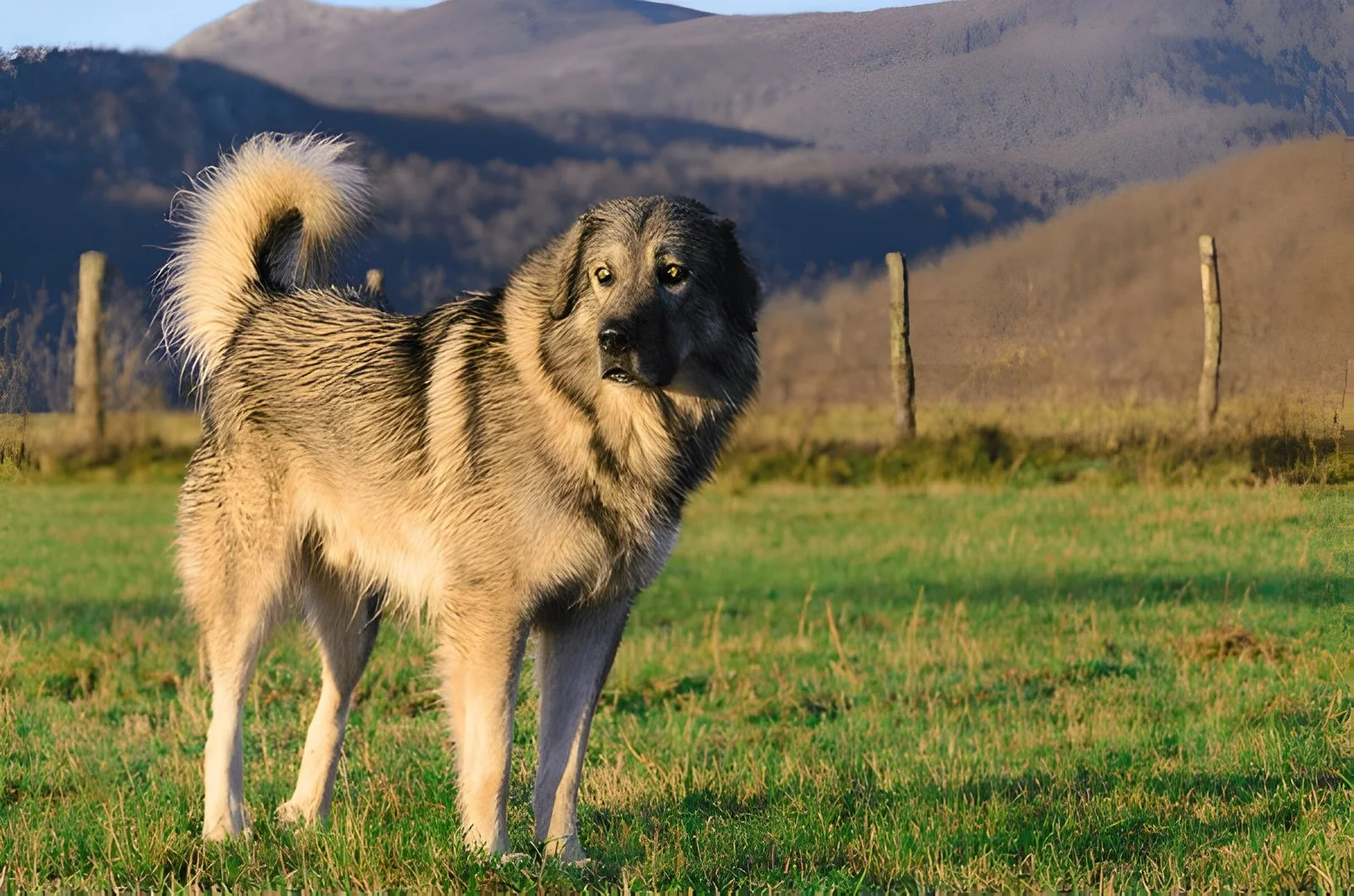The Sarplaninac is a majestic and rare dog breed native to the Balkan Peninsula, specifically thriving in the rugged mountainous areas of Serbia, Macedonia, and Kosovo. Renowned for their impressive size, robust build, and protective instincts, Sarplaninacs have long been celebrated as devoted companions and vigilant guardians.
History and Origin
The precise origins of the Sarplaninac remain somewhat elusive, but it is widely believed that this breed descends from ancient Molosser-type dogs. For centuries, Sarplaninacs have served as steadfast livestock guardians in the harsh, mountainous landscapes of the Balkans. Their primary duty has been to safeguard flocks of sheep and goats from formidable predators like wolves and bears.
Physical Characteristics
Sarplaninacs are a large and commanding breed. Adult males typically stand up to 28 inches (71 cm) at the shoulder, while females reach around 26 inches (66 cm). They boast a muscular, athletic frame with a deep chest and a strong back. Their coat is dense and double-layered, usually in shades of brown or gray, designed to protect them from the severe weather conditions of their native mountainous regions.
Temperament
- Loyal and Protective: Sarplaninacs are known for their fierce loyalty and strong protective instincts. They excel as guard dogs, willing to defend their families at all costs.
- Independent: This breed is notably independent and can be quite stubborn. They need a strong, confident leader to guide them effectively.
- Gentle: Despite their formidable appearance and protective nature, Sarplaninacs are generally gentle and affectionate with their families. They can be good with children if properly socialized.
Care and Training
- Exercise: Sarplaninacs require substantial exercise to remain healthy and content. Daily walks, runs, or playtime in a securely fenced yard are essential.
- Training: Early socialization and training are vital for this breed. Their strong-willed nature makes positive reinforcement methods particularly effective.
- Grooming: Regular brushing is necessary to manage their dense coat, remove loose hair, and prevent matting.
- Health: Generally, Sarplaninacs are robust dogs, but they can be prone to health issues such as hip dysplasia and elbow dysplasia.
Living with a Sarplaninac
If you’re considering adding a Sarplaninac to your household, it’s crucial to ensure that this breed matches your lifestyle. Their protective instincts may not be suitable for every home. Here are some key considerations:
- Space: Sarplaninacs need ample space to roam and exercise. They are not ideal for apartment living.
- Socialization: Early and ongoing socialization is important for Sarplaninacs to develop well-rounded behavior and to interact positively with other dogs and people.
- Training: Consistent, positive training is necessary to manage their strong-willed nature effectively.
- Protection: While Sarplaninacs make excellent guard dogs, their protective nature may be overwhelming for some people.
Conclusion
The Sarplaninac is a remarkable breed with a storied history and a loyal, protective disposition. If you seek a dedicated and intelligent companion, this majestic dog might be an ideal choice. However, be prepared to invest in their care, training, and attention to ensure they thrive in your home.

